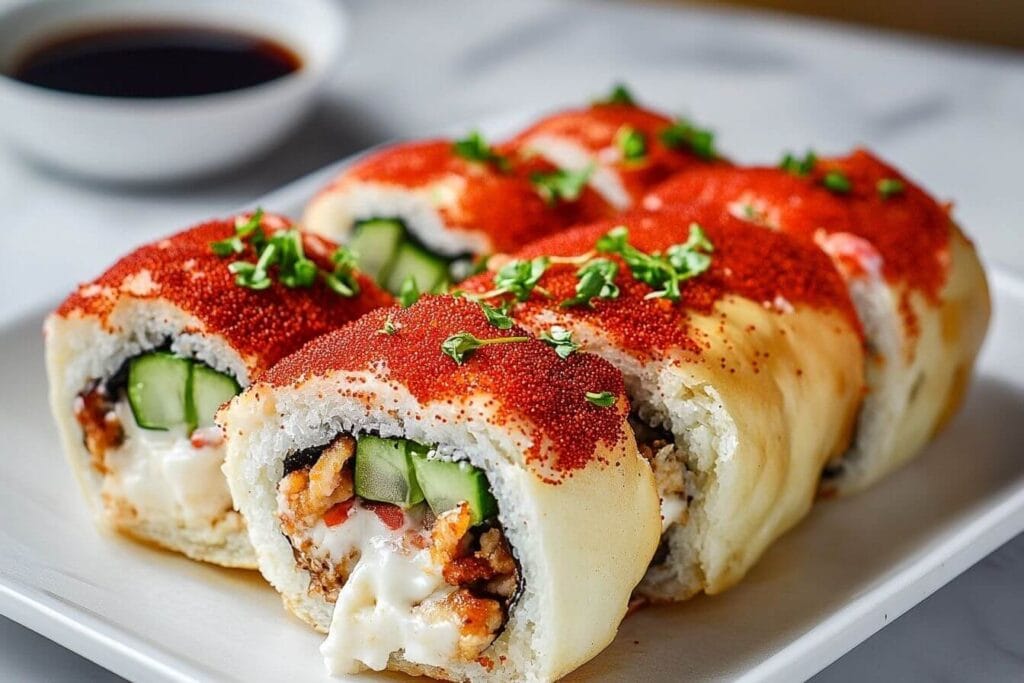Introduction
The Boston Roll is a popular American adaptation of traditional Japanese maki sushi, celebrated for its fresh, seafood-forward taste and accessibility. This roll sets itself apart by featuring poached shrimp as its main ingredient, offering a sweet, delicate flavor that resonates with both sushi enthusiasts and newcomers alike.
Unlike the iconic California Roll, which uses imitation crab, the Boston Roll embraces its New England roots by spotlighting shrimp, a regional seafood favorite. This substitution not only enhances its flavor but also adds a unique touch that distinguishes it from its sushi counterparts.
Born in the Eastern United States, the Boston Roll exemplifies how Japanese culinary traditions have been creatively adapted to suit American tastes. Its fusion of fresh seafood, seasoned rice, and complementary ingredients makes it a vibrant representation of how sushi can evolve while staying true to its origins. Whether you’re a sushi aficionado or someone exploring the cuisine for the first time, the Boston Roll offers a perfect balance of tradition and innovation.
Ingredients
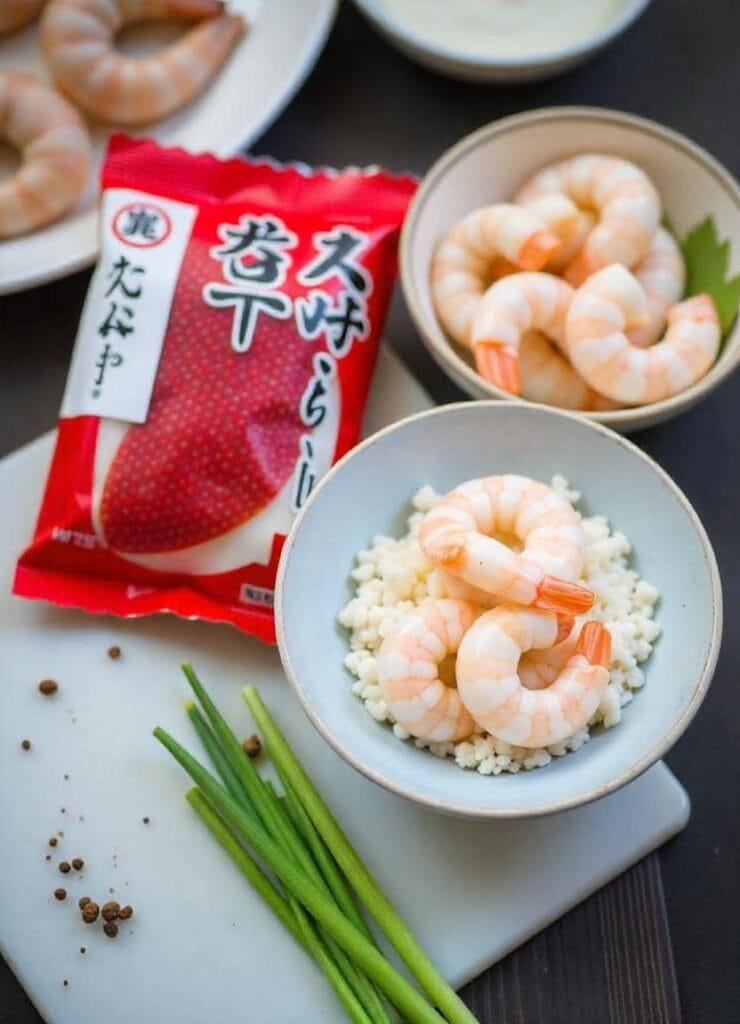
To craft the delightful Boston Roll, you’ll need a selection of fresh and flavorful ingredients that come together to create its signature taste and texture. Here’s a list of the key components:
- Poached Shrimp
- The star ingredient of the Boston Roll, offering a tender, slightly sweet flavor that pairs perfectly with the other elements.
- Avocado
- Creamy and rich, avocado adds a smooth texture and balances the flavors with its mild, buttery taste.
- Cucumber
- Crisp and refreshing, cucumber provides a delightful crunch and a subtle hint of sweetness.
- Sushi Rice
- Seasoned with rice vinegar, sugar, and salt, sushi rice serves as the base that binds the roll together, offering a slight tang to complement the ingredients.
- Nori Sheets
- Thin, roasted seaweed sheets hold the roll in place, adding a savory, umami-rich element to the Boston Roll.
- Masago (Capelin Roe) or Tobiko (Flying Fish Roe)
- These tiny, colorful fish eggs add a pop of color, a slight crunch, and a salty burst of flavor, making the roll visually appealing and enhancing its taste.
These ingredients combine to create the Boston Roll’s perfect balance of flavors, textures, and aesthetics, making it a sushi favorite across the globe.
Table of contents
Preparing Sushi Rice
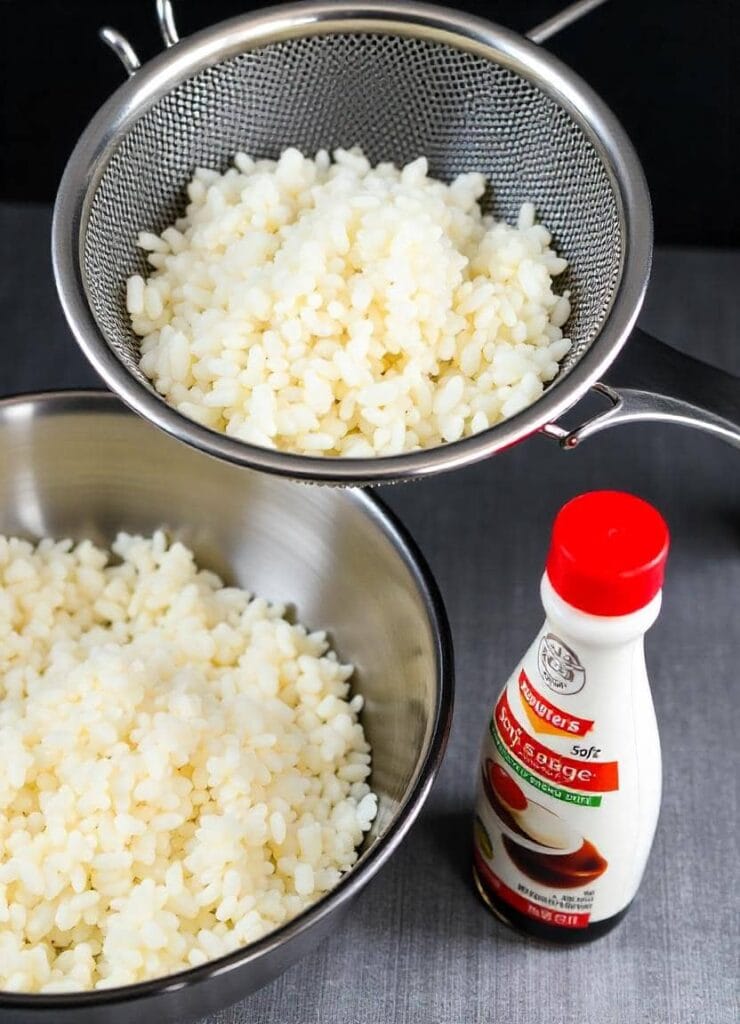
Making perfect sushi rice is essential for creating a delicious Boston Roll. The process requires attention to detail and high-quality ingredients to achieve the right flavor and texture.
- Choose the Right Rice
- Use high-quality Japanese short-grain rice for its sticky, slightly sweet characteristics that are ideal for sushi. Avoid long-grain varieties as they lack the necessary texture.
- Measure the Rice and Water
- Use a 1:1 ratio of rice to water. For example, if you’re cooking 1 cup of rice, use 1 cup of water. This ensures the rice cooks evenly without becoming mushy.
- Cook the Rice
- Rinse the rice thoroughly under cold water until the water runs clear to remove excess starch.
- Cook the rice using a rice cooker or stovetop, following the 1:1 ratio for water.
- Season the Rice
- While the rice is still warm, transfer it to a large bowl.
- Prepare a seasoning mixture using rice vinegar, sugar, and a pinch of salt (about 2 tablespoons vinegar, 1 tablespoon sugar, and ½ teaspoon salt per cup of cooked rice).
- Gently fold the mixture into the rice using a cutting motion with a rice paddle or wooden spoon to avoid crushing the grains.
- Cool the Rice
- Allow the rice to cool to room temperature, covering it with a damp towel to prevent it from drying out. Properly seasoned sushi rice is now ready to use in your Boston Roll.
Poaching Shrimp
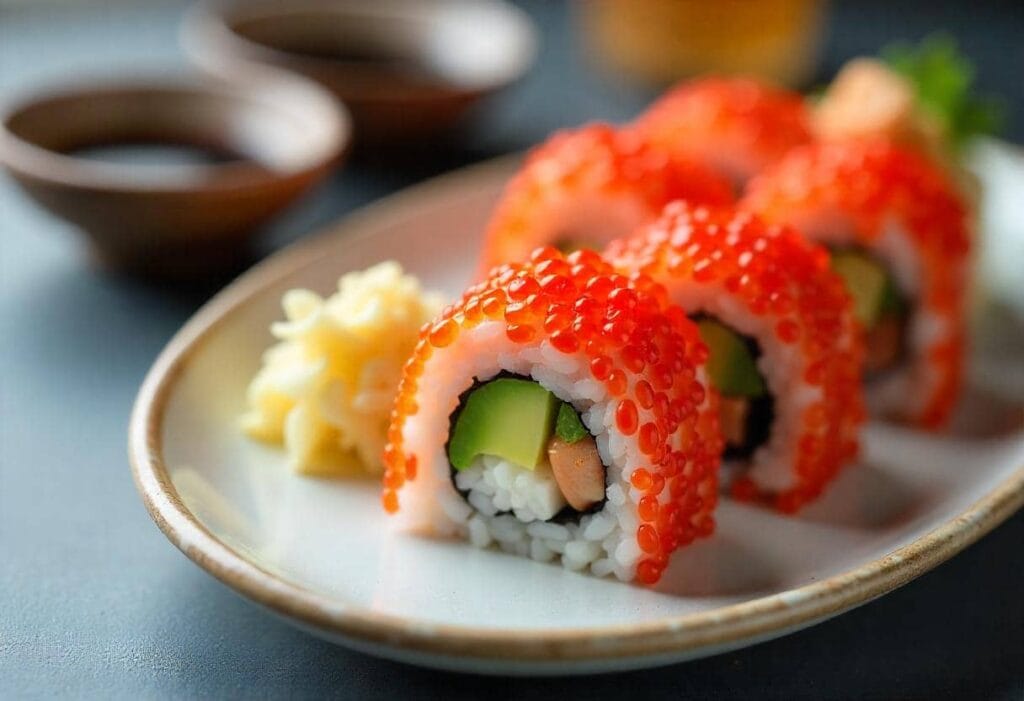
The poached shrimp in the Boston Roll should be tender, juicy, and perfectly cooked. Follow these steps for consistently excellent results:
- Boil the Water
- Fill a large pot with water and bring it to a rolling boil over medium-high heat.
- Season the Water
- Add a generous pinch of salt to the water to enhance the shrimp’s natural flavor.
- Add the Shrimp
- Place raw shrimp (peeled and deveined) into the boiling water. Use medium or large shrimp for the best texture in sushi.
- Cook the Shrimp
- Cover the pot with a lid, remove it from the heat, and let the shrimp sit in the hot water for 3 to 6 minutes, depending on their size. The shrimp should turn pink and opaque when fully cooked.
- Cool the Shrimp
- Immediately transfer the cooked shrimp to a bowl of ice water to halt the cooking process and maintain their firm texture. Let them chill for a few minutes.
- Drain the Shrimp
- Remove the shrimp from the ice water and pat them dry with a paper towel. Your shrimp are now ready to be used in the Boston Roll.
By following these steps, you’ll have perfectly prepared rice and shrimp—the foundations of an exceptional Boston Roll!
Assembling the Sushi Roll
Creating a Boston Roll is as much about technique as it is about flavor. Follow these step-by-step instructions to assemble your roll like a pro:
- Gather Your Ingredients and Tools
- Have all your prepared ingredients ready: sushi rice, poached shrimp, cucumber sticks, avocado slices, and masago or tobiko.
- You’ll also need a bamboo mat, plastic wrap, and a sharp knife for precise cutting.
- Prepare the Bamboo Mat
- Cover the bamboo mat with a layer of plastic wrap to prevent sticking and make cleanup easier.
- Place the Nori Sheet
- Take a half-sheet of nori and lay it shiny side down on the bamboo mat.
- Spread the Sushi Rice
- Evenly spread about ¾ cup of seasoned sushi rice across the surface of the nori, leaving a small border (about ½ inch) at the top for sealing the roll.
- Add Masago or Tobiko
- Sprinkle a thin layer of masago or tobiko over the rice for added flavor and texture.
- Flip the Nori
- Carefully flip the nori sheet so the rice is now facing down on the plastic-wrapped mat.
- Add the Filling
- Horizontally arrange 4 poached shrimp, 2 cucumber sticks, and 2-3 slices of avocado along the center of the nori. Keep the ingredients aligned and balanced for a clean roll.
- Roll the Sushi
- Using the bamboo mat, carefully lift the edge closest to you and begin rolling it over the filling.
- Press gently but firmly to shape the roll, ensuring it’s tight and even. Continue rolling until the nori fully encloses the ingredients.
- Cut the Roll
- Wet a sharp knife with water to prevent sticking. Cut the roll into 6-7 even pieces by slicing in a smooth, sawing motion. Rewet the knife as needed between cuts.
Tips for Success
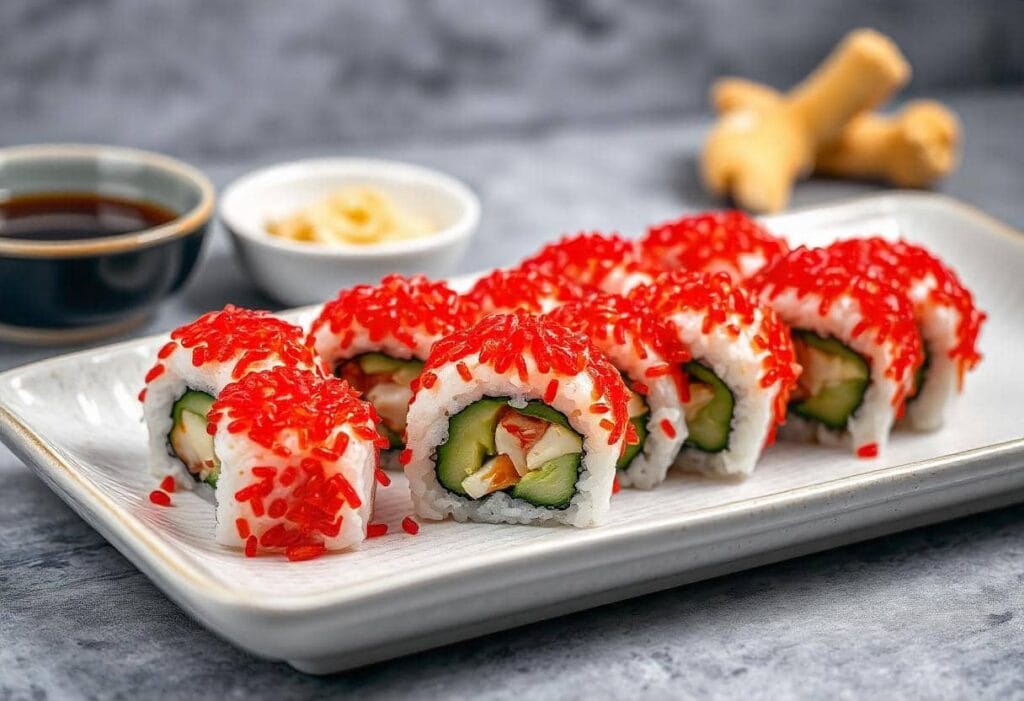
Making sushi takes practice, so don’t be discouraged if your first roll isn’t perfect. Here are some tips to improve your technique:
- Practice Makes Perfect
- Rolling sushi is an art that gets easier with experience. The more you practice, the better your rolls will look and taste.
- Use the Right Amounts
- Avoid overfilling the roll to ensure it closes tightly. Similarly, spreading the rice too thick can make the roll difficult to handle. A thin, even layer is ideal.
- Don’t Stress About Appearance
- While presentation is important, the taste is what truly matters. Focus on balancing the flavors and textures.
- Keep Tools and Hands Wet
- Prevent rice from sticking to your hands and knife by keeping them slightly damp during assembly and cutting.
- Experiment and Adjust
- Feel free to tweak the ingredient proportions to match your preferences. Every sushi chef adds a personal touch to their rolls.
With these steps and tips, your Boston Roll will turn out delicious, whether you’re a beginner or a seasoned sushi maker!
Sourcing Ingredients
To make a delicious Boston Roll, sourcing the right ingredients is key. Here’s how and where to find high-quality nori sheets and other essentials:
Where to Purchase Nori Sheets
- Online Retailers
- Websites like Amazon offer a wide variety of nori sheets, often in bulk or specialty brands. Look for high-rated products with good customer reviews for quality assurance.
- Physical Stores
- Walmart: Many Walmart locations carry nori sheets in the international or Asian foods aisle.
- Whole Foods: Known for its organic and high-quality selection, Whole Foods often stocks premium nori sheets.
- Local Asian Markets: These are excellent places to find authentic and affordable nori sheets. Staff members may also provide advice on the best brands for sushi-making.
Tips for Selecting High-Quality Nori
- Color: Look for nori sheets with a uniform greenish-black color. Avoid sheets that appear faded, brown, or overly shiny, as these indicate lower quality.
- Texture: High-quality nori should feel crisp and break cleanly when folded. If it feels limp or soft, it may not be fresh.
- Appearance: Inspect the sheets for holes or tears, which can make rolling difficult. Perfectly intact sheets are ideal.
- Thickness: Choose nori that is thin yet sturdy enough to hold fillings without tearing.
By sourcing premium ingredients, particularly nori sheets, you’ll elevate the flavor and presentation of your Boston Roll, ensuring a sushi experience that’s both authentic and enjoyable.
FAQ
What does the Boston Roll have in it?
The Boston Roll typically contains poached shrimp, avocado, and cucumber as its primary fillings. It’s wrapped in sushi rice and a nori sheet and often topped with masago (capelin roe) or tobiko (flying fish roe) for added flavor and texture.
What is the difference between a Boston Roll and a Philadelphia Roll?
The key difference lies in the main ingredients:
- The Boston Roll features poached shrimp as the central ingredient, paired with avocado and cucumber.
- The Philadelphia Roll incorporates smoked salmon and cream cheese, giving it a rich, savory flavor.
Both rolls reflect unique regional twists on traditional sushi but differ significantly in taste and texture.
What is the orange stuff on a Boston Roll?
The orange topping on a Boston Roll is typically masago (capelin roe) or tobiko (flying fish roe). These tiny, crunchy fish eggs add a slightly salty flavor and a visually appealing pop of color to the roll.
Is the Boston Roll good?
Absolutely! The Boston Roll is a favorite for many sushi lovers due to its fresh, light flavors and satisfying combination of ingredients. The sweet, tender poached shrimp pairs perfectly with creamy avocado, crisp cucumber, and seasoned sushi rice. It’s an excellent choice for both sushi beginners and seasoned enthusiasts.
Conclusion
The Boston Roll is a perfect example of how traditional Japanese sushi can be beautifully adapted to American tastes. With its tender poached shrimp, creamy avocado, crisp cucumber, and seasoned sushi rice, it delivers a harmonious balance of flavors and textures that are both refreshing and satisfying.
This roll not only showcases the creativity of sushi chefs but also highlights the culinary influence of New England’s seafood traditions. Whether you’re a seasoned sushi enthusiast or trying sushi for the first time, the Boston Roll offers a delightful experience that bridges cultures and flavors.
Making a Boston Roll at home is an enjoyable and rewarding process. From preparing sushi rice to assembling the roll, each step invites you to appreciate the art of sushi-making. While it may take some practice, the result is a delicious, restaurant-quality roll that you can proudly share with friends and family.
So, gather your ingredients, roll up your sleeves, and enjoy the journey of creating this American sushi classic in your own kitchen!

